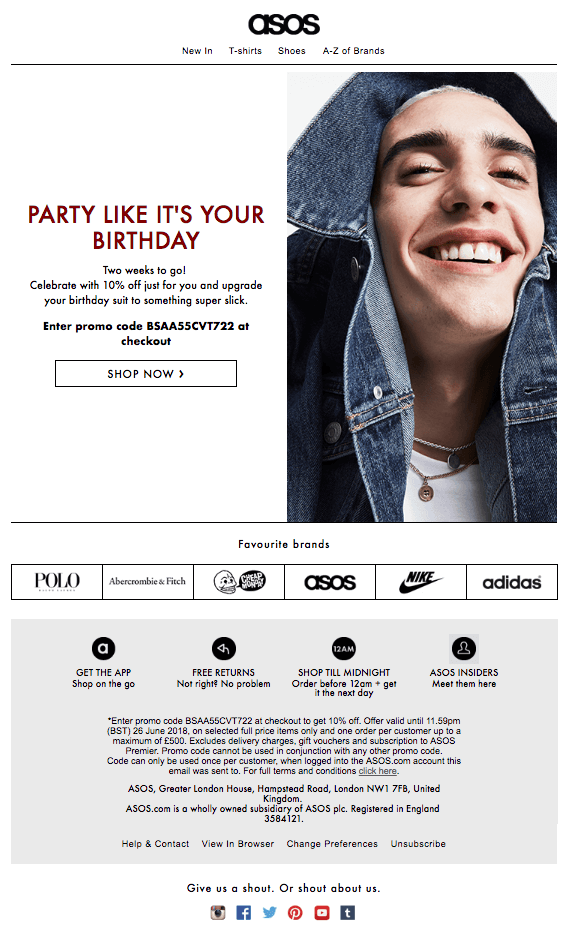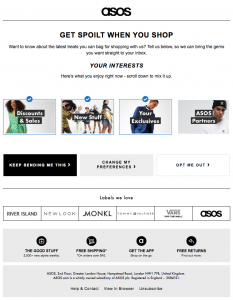When it comes to small business, what are some winning pricing strategies?
Digital transformation got an incredible speed boost in 2020.
The online market is now more crowded than ever. Marketers try to come up with creative campaign ideas to stand out in this crowd. Some actually work, but at what cost? How much money are you spending on ads?
What if we told you, you could get a competitive edge using smart pricing strategies?
Strategies that help you expand your customer base while improving profitability. All while spending nothing on ads. That’s what’s so smart about data-driven pricing. There’s no trade-off. But room for improvement? Indefinite.
So by the end of this post, you’ll find out three smart pricing strategies that’ll help you grow profitably.
Let’s dive in!
Increase customer loyalty with personalized discounts.
Accenture found 90% of shoppers prefer stores/brands that remember their preferences and offer relative recommendations and discounts. Shoppers are less reluctant to share personal information when they know it’s going to be used in their favor. That’s why 83% of shoppers are more likely to share personal data if they’re getting a more personalized experience.
Personalization is key in creating an excellent customer experience. And one data-driven tactic that works well is offering personalized discounts.
It does several things at once for a business:
- Helps build a strong relationship with customers
- Saves the business from the burden of blanket discounts
- Gathers useful data for strategic planning
Take Asos birthday campaigns.

It’s really a wonderful example of personalized content mixed with a personal promo code. Think of it as an inspiration. You can start small by sending these emails to your returning customers—almost like a loyalty program. If successful, you’ll expand it to other customers to increase engagement.
And there’s much more room for imagination here.

Moreover, Asos takes things further and gives its customers exclusive offers based on their preferences, wish lists, abandoned carts, previously used discounts, and other signs of what they are interested in. And they send customers emails with those tailored offers. And those, in turn, give customers a really good reason to open those emails in the future.
On top of all, the data gathered in the process is extremely valuable. And that is why personalization if one of the great pricing strategies for any small business.
Cross-sell like Amazon
Everyone heard of how Amazon perfected cross-selling, upselling, recommendations, and so on. And there’s nothing going on behind the scenes. There’s no secret to that success.
All the information a company needs for successful cross-selling is in customer data. Learning how to collect data and giving it meaning is the key to providing top-notch customer experience.
For starters, look at which products are often bought together to tailor your generic recommendations to your audience. It’s not even about personalization, it’s just a low hanging fruit. To top that generic recommendation, bring customer data to the game.
Look for patterns in people’s buying behavior:
- When they buy that specific product
- How often they buy it
- How many units they buy
- Which size of packaging they prefer
- What they browse across categories
- Wish lists
- Abandoned carts
Customer data management software will help you collect data if you’re hosting your own website. And there are apps and integrations for Shopify or Magento stores that generate relevant product recommendations dynamically. Lastly, you can have someone build a system for gathering data, and an algorithm to turn that data into meaningful recommendations.
Additionally, due to their nature small business managers are closer to their customers. They interact with them more often and, frequently, face to face. They know their customers and their shopping habits better. That in itself makes it easier for small businesses to incorporate cross-selling and up-selling tactics as one of their successful pricing strategies.
Sell popular products cheaper than competitors
One great struggle of small businesses is getting traction to their store.
If you’re not expanding your customer base, something is not working. More people should be aware of your store each month, and there’s no better way to do it than using your popular products.
For instance, if you’re selling iPhones, Xbox, or PS5, you can use them to drive traffic to your store. How?
I’m sure you’ve used a price comparison website before. But have you noticed how much traffic they get?

It’s too much to miss out on.
Regardless of how small your company is, you can offer competitive prices, and make it to the top of that list.
And you don’t have to be the cheapest for all products you sell, you just have to build a perception.Seeing you offer the best prices over and over, people will think of your fair prices the next time they shop.Because most of the time, how people perceive you in comparison to your competitors is more important than the reality itself.
How do you think Amazon perfected cross-selling and up-selling? They’re not the cheapest for all, but certainly for the popular products.
Okay, but can you afford it? After all, many small businesses are not Amazon. They don’t have a cost advantage, and suppliers charge more when compared to those eCommerece giants.
Yes, you can.
The key is in keeping those new customers. If you succeed at making them return to your store, you’ve given yourself a chance to build long-lasting relationships. In other words, increasing your visibility is important, but you also have to increase their lifetime value.
Bottom Line
No matter how small your business is, you can actually stand out from the crowd.
Just remember if you’re sincerely interested in what shoppers want and need, you can meet their expectations. Incorporating these pricing strategies can help dramatically.



